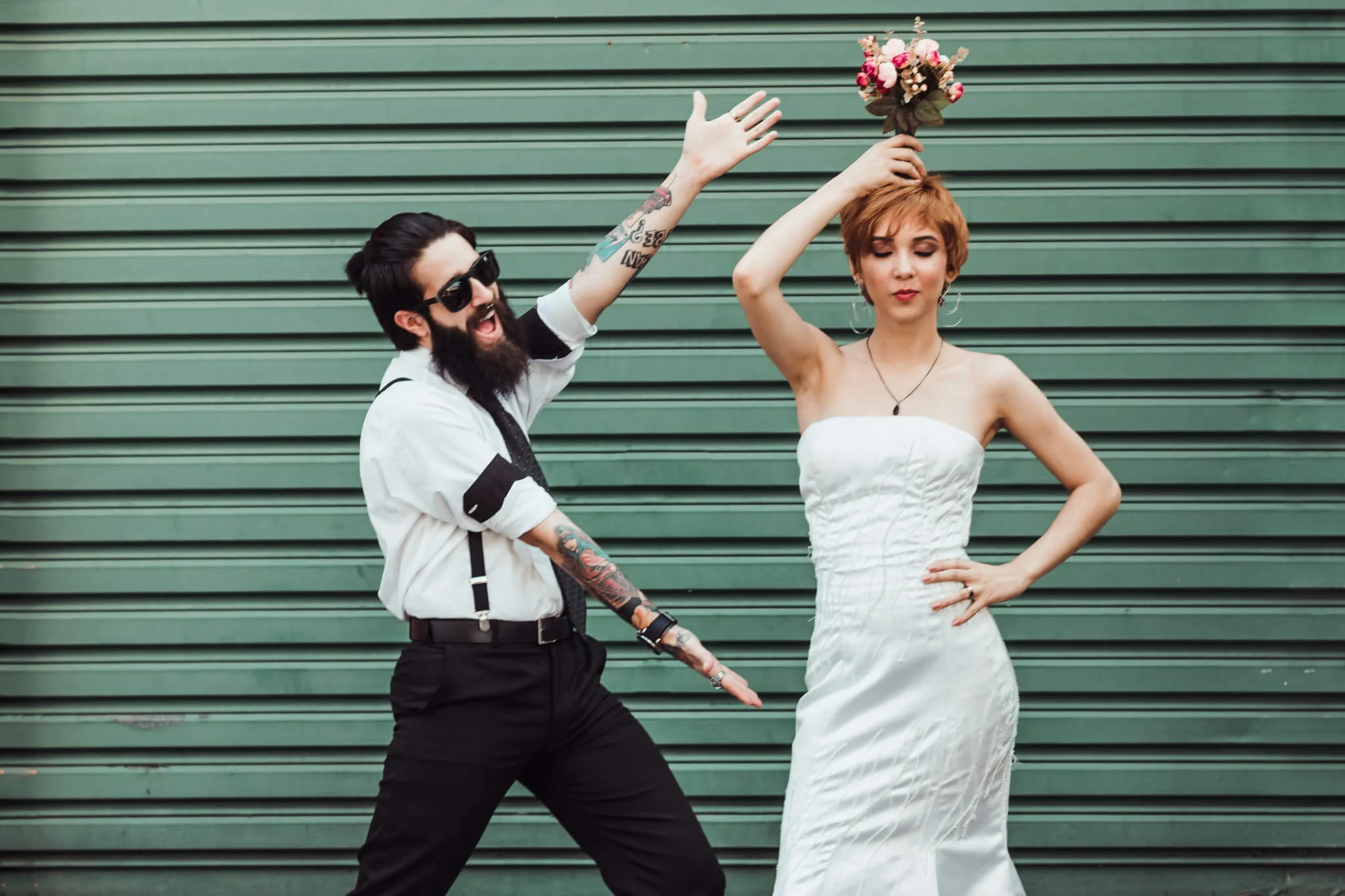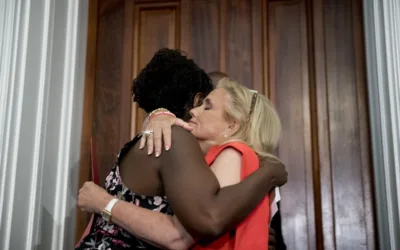
Are ceremonies still religious? Do parents still pay for weddings? Are wedding cakes still popular? Find all the answers to the questions you didn’t know you had about modern weddings.
MICHIGAN — It’s wedding season in Michigan. But between the ingenuity demanded by the pandemic and shifting social attitudes over the last few decades, some things might be a little different — and probably a bit more expensive — than you remember.
According to industry experts, 2022 is expected to be the busiest wedding season in 40 years, coming on the heels of many couples who had to postpone ceremonies over the last two years. And for Michigan’s billion-dollar wedding industry, this summer is poised to mark a sharp comeback. In 2021, according to The Wedding Report, the average Michigan wedding cost $20,600, a 70% increase from the 2020 average of $14,800. Couples can also expect to pay about $1,000 to $3,000 more this year, according to reports from Fortune.
Whether you’re employed in the industry, actively planning a wedding, or expecting to attend one soon, there are also some other national trends and changes in tradition you might want to know before you show up at your next wedding ceremony.

What’s the most popular wedding month? If you guessed June, you’re wrong.
Over the last few years, October has dethroned June as the most common “wedding month,” with more couples opting for crisp autumn air and mild temperatures instead of the heat of early summer.
According to The Knot’s Real Wedding Study for 2021, summer is still the most popular season for weddings, with 65% of couples nationwide expected to choose a summer ceremony. However, 17% of all weddings are scheduled for October —more than any other month. Oct. 22 is also expected to be the most popular date of the year, with Oct. 1 and Oct. 8 not too far behind. A June date still takes third place, though, with June 18 expected to be a top date this year.
Reception halls are great, but barn weddings are trendier.
Between the 2020 restrictions on indoor social gatherings and the continued safety concerns about COVID-19 variants, it’s not a surprise that outdoor weddings became the prevailing trend for both the ceremonies and receptions. And rustic barn weddings are turning out to be an Instagrammable trend in addition to keeping guests mostly outdoors.
According to The Knot’s data, 68% of 2020 wedding ceremonies took place either fully or partially outside, with the number decreasing only marginally to 62% in 2021. One of the most popular venues in 2020 turned out to be barns and farms, a trend that continued into 2021. For Michigan couples that want to get in on this trend, some barn venues in Michigan include the Olde Farmhouse Barn, Cobblestone Farm, Post Family Farm, Blissful Barn, Cherry Barc Farm, and Zingerman’s Cornman Farms. Don’t forget to bring bales of straw.

Who’s the wedding vendor MVP? The photographer.
Engaged couples are often overwhelmed with options for wedding vendors. As unanticipated costs pile up, it’s normal for engaged couples to wonder which services are the most important to have at their wedding and which ones are luxuries. As it turns out, newlyweds agree that the photographer is the single most vital component of the show.
It might even be worth splurging on.
The average cost nationwide for a photographer is about $2,500, and couples overwhelmingly find that high-quality professional photos are well worth the expense. According to data from The Knot, 87% of couples hired a photographer — beating out other popular vendors like caterers, hairstylists, makeup artists, florists, and even DJs.
The 2020 Newlywed Report from WeddingWire also reported that photography was the most popular budget increase for couples, with 47% of them spending more than initially planned.
Today, it’s pretty common to already know someone who does photography either as a self-employed gig or a side hustle. The US Bureau of Labor Statistics reports demand for photographers is growing, with an optimistic job outlook. Between 2020 and 2030, photography job growth is estimated at 17% —more than twice the normal growth rate.
This increased demand is likely due to the growth of social media and technology, as it becomes more socially important (and expected) than ever to make a professional wedding photo your profile photo or cover photo. Not to mention, most couples would agree: The most important part of the “best day of their lives” is recording the good memories.

Multicultural and interfaith weddings are on the rise.
Finding the love of your life is now less about finding someone just like you.
In 1967, the Loving v. Virginia Supreme Court case legalized marriage for couples of different races and ethnicities. Since then, rates of those marriages have increased to nearly six times what they were in 1967, according to the Pew Research Center. These numbers are also only rising with the marriage rates of Generation Z, which the Pew Research Center defines as the most racially and ethnically diverse generation yet, with nearly half (48%) of Generation Z having some variant of a non-white identity.
eligious weddings are also no longer in the majority. Older generations of couples often had to make an important choice about converting religions for the sake of their spouse-to-be. But that’s not the case anymore. According to data from The Knot, only about one in five weddings were hosted by religious congregations in 2017 — down from about 40% of weddings in 2009.. At the same time, the rate of couples being married by a friend or family member nearly doubled from 29% to 43% between 2009 and 2016.
Does this mean today’s weddings are all non-religious? Of course not. According to The Knot’s 2021 data, 60% of couples still find it important to incorporate their religion, ethnicity, or culture into their wedding. Most of these practices take the form of ceremonial traditions and religious traditions — such as jumping the broom. Couples have also been known to incorporate their heritage through food or attire.
Who’s footing the bill? Not exclusively the bride’s parents.
Talking about money is less than romantic, but always necessary — especially during wedding season.
As tradition has dictated, the bride’s parents are commonly expected to carry the financial burden of a wedding. This centuries-old tradition is rooted in patriarchal concepts of dowries and marrying off daughters to avoid the costs of an unintended pregnancy. So maybe it’s a good thing that we’re breaking away from outdated traditions in this wedding lore.
Though parents still pay for the majority of weddings, it’s often quite mixed, with costs divided between the couple, both families, and possibly even other contributions from friends. According to the 2020 Newlywed Report from WeddingWire, parents with Millennial children pay for 56% of their child’s wedding on average. But they are also likely to only pay for certain items, or split costs with the other family or even the couple. About one-third of parents wrote a check for the couple to spend at their discretion.
There are also many couples opting to pay their own way into marriage. Couples on their second marriage paid for 88% of the wedding on average, while those in Generation X paid for 78% and LGBTQ+ couples paid for about 61%.

Buddymoons over bachelor parties?
Gender diversity is increasing in our world and reflected in the weddings we attend. No longer are engaged couples forced to make important decisions on the basis of gender.
Today, you might see a bridesman among bridesmaids, a groomswoman among groomsmen, or wedding party members that don’t identify as strictly male or strictly female. These types of wedding parties, called mixed-gender or coed bridal parties, often incorporate important friends and family regardless of their gender. It’s the new norm.
According to The Knot’s data, at least three in five wedding parties were mixed-gender in 2019. The American Wedding Study from Brides.com reports 85% of brides have a bridal party, and the average wedding party size is about 10 people. But how the wedding party looks, both in members and their attire, is no longer as uniform as it used to be.
Another gendered tradition that’s evolving? Bridal showers, bachelor parties, and even honeymoons. Past generations saw the honeymoon as a private getaway for the newlywed couple, primarily because they didn’t live together before marriage. Today, about three out of four couples cohabitate before getting married, according to 2020 data from WeddingWire. That makes the honeymoon a little obsolete, so today’s couples are sometimes opting to bring all their friends along for a “buddymoon.”
Popular among Millennials, the buddymoon is a post-wedding getaway where friends and family are also invited. In the 2020 Brides American Wedding Study, 23% of different-gender couples took a buddymoon. The number nearly doubled (42%) among same-gender couples. Among LGBTQ+ couples especially, the “found family” can be an important priority for newlywed life.
Taking a selfie qualifies as reception entertainment.
The reception venue is gorgeous, your makeup is on point, and you and your guest look amazing in your outfits. Of course you’re going to take a selfie. And more and more couples are integrating this important part of social media culture directly into their receptions.
According to The Knot’s Real Wedding Study for 2021, 43% of couples nationwide included additional entertainment aside from live music or a DJ. Of those couples, 74% of the entertainment options came in the form of a photo booth, video booth, or selfie station.
Photo booth rentals average between $400 and $500 nationwide, but they give guests something special to do when they’re tired of dancing. Some couples break the cost by DIYing their own photo booth using technology like the Photo Booth App on an iPad.
Another trending form of entertainment? Bonfires. Considering how much Michiganders love their bonfires, perhaps we’ll see this form of entertainment catching on at more weddings.
Don’t be shocked by a cakeless wedding.
The multi-tiered white cake adorned in buttercream or fondant may just be the most recognizable symbol of a traditional wedding. But surprisingly, modern weddings are seeing the signature confectionery less and less. For some couples, it’s simply not important.
Influenced by taste palettes and the allure of social media sites like Instagram and Pinterest, couples today are opting for alternative desserts that are just as photo-worthy.
In 2020, 31% of couples opted not to serve a wedding cake, according to data from The Knot. And even for the couples that did get a cake, more than half (53%) also served a second type of wedding dessert — like cupcakes, cake pops, cookies, tarts, pies, donuts, waffles, and even candy bars.
Despite this changing tradition, the cake-cutting ceremony is still one of the most important reception traditions. The 2020 Newlywed Report from WeddingWire reports that 86% of weddings included a cake-cutting ceremony. How did so many couples do this when so few were serving cake? Easy — by using a cutting cake, a very small cake that can still check ceremonial boxes without actually being served to guests.

More couples are worried about sustainability and eco-friendly options.
Let’s face it — consumer culture gets wasteful. And there’s often no better example of consumer culture than weddings, which can create a lot of waste in a short amount of time.. That’s why many couples are taking steps to be more environmentally conscious for their big day.
Nearly 70% of couples polled by The Knot in 2021 reported that they either incorporated an eco-friendly option into their wedding or plan to do so. One in three couples also expressed a preference for environmentally sustainable options from their wedding vendors as well.
How are couples getting more sustainable? The most popular option was reusing. These couples avoided brand new merchandise in favor of secondhand décor or upcycled items. Other popular options included more eco-friendly options for leftover food, avoiding throwaway paper products, using sustainable flowers and décor, and locally-sourcing food and other products.
The first dance is one of the few traditions that hasn’t changed.
Though many things about weddings change, some things remain the same. While today’s couples are happy to remix old traditions like attire, wedding cakes, and honeymoons, there’s one tradition that appeals to the timeless romantic in all of us — the first dance.
According to WeddingWire’s 2020 Newlywed Report, 91% of couples celebrated their first dance. The tradition originates from 17th-century Europe, when it was customary for the guest of honor to lead the first dance at a formal ball. This was usually the person of the highest social standing, such as royalty. Today, the first dance can take many variations from spontaneous to choreographed, sometimes even including the wedding party or karaoke.
Spotify lists the most popular songs for the first dance:
- “Thinking Out Loud” by Ed Sheeran
- “At Last” by Etta James
- “You Are the Best Thing” by Ray LaMontagne
- “All of Me” by John Legend
- “A Thousand Years” by Christina Perri
- “Make You Feel My Love” by Adele
- “I Won’t Give Up” by Jason Mraz
- “Everything” by Michael Bublé
- “Better Together” by Jack Johnson
- “Amazed” by Lonestar

VIDEO: Trump isn’t the only republican facing charges for alleged financial crimes
https://www.tiktok.com/@gandernewsroom/video/7361494909938978090 A whole lot of Michigan Republicans and lobbyists are facing criminal charges for...

VIDEO: It’s expensive to be poor in Michigan
https://www.tiktok.com/@gandernewsroom/video/7361154790300060974 Ever heard of predatory payday loans? Here’s how new laws could help protect...

Here’s everything you need to know about this month’s Mercury retrograde
Does everything in your life feel a little more chaotic than usual? Or do you feel like misunderstandings are cropping up more frequently than they...

The ’Gander wins multiple 2023 Michigan Press Association awards
MICHIGAN—The ’Gander Newsroom has earned multiple awards in the 2023 Michigan Press Association Better Newspaper Contest. The awards were announced...

Michigan Republicans ask Supreme Court to restrict medication abortion access
A lawsuit supported by Republicans could disrupt access to the most common form of abortion—even in Michigan, where reproductive rights are...




